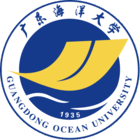详细信息
香港牡蛎酶解产物对雷公藤甲素诱导雄性小鼠生精障碍的影响 被引量:2
Effects of Hong Kong oyster Crassostrea hongkongensis enzymatic hydrolysate on spermatogenic dysfunction in male mice induced by triptolide
文献类型:期刊文献
中文题名:香港牡蛎酶解产物对雷公藤甲素诱导雄性小鼠生精障碍的影响
英文题名:Effects of Hong Kong oyster Crassostrea hongkongensis enzymatic hydrolysate on spermatogenic dysfunction in male mice induced by triptolide
作者:张锴佳[1];张雪妍[1];秦小明[1,2];林海生[1,2];高加龙[1,2];郑惠娜[1,2];曹文红[1,2]
机构:[1]广东海洋大学食品科技学院,广东湛江524088;[2]广东省水产品加工与安全重点实验室,广东普通高等学校水产品深加工重点实验室,国家贝类加工技术研发分中心(湛江),南海生物资源开发与利用协同创新中心,广东湛江524088
年份:2022
卷号:37
期号:6
起止页码:941
中文期刊名:大连海洋大学学报
外文期刊名:Journal of Dalian Ocean University
收录:CSTPCD、、CSCD2021_2022、北大核心、CSCD、北大核心2020
基金:财政部和农业农村部:国家现代农业产业技术体系资助(CARS-49)。
语种:中文
中文关键词:牡蛎酶解产物;生精障碍;雷公藤甲素
外文关键词:oyster enzymatic hydrolysate;spermatogenic dysfunction;triptolide
中文摘要:为探讨香港牡蛎Crassostrea hongkongensis酶解产物(oyster enzymatic hydrolysate, OEH)对雄性生精障碍的保护作用,采用雷公藤甲素(triptolide, TP)连续腹腔注射ICR雄性小鼠21 d,构建生精障碍动物模型,同时按低、中、高剂量(250、500、1 000 mg/kg)灌胃OEH,通过测定ICR雄性小鼠精子参数、脏器系数、血清激素水平和睾丸组织酶活性等指标,以及HE染色观察睾丸组织结构,探究OEH对生精障碍雄性小鼠的作用。结果表明:中、高剂量OEH能提高小鼠睾丸脏器系数;HE染色结果显示,低、中、高剂量OEH均可减少精管内空泡化现象,并改善生精细胞形态,使精管内生精细胞数量恢复至与空白组相近;与模型组相比,中、高剂量OEH能极显著提高小鼠精子数量和精子活动率(P<0.01),各OEH剂量均能极显著降低精子畸形率(P<0.01);生化指标分析显示,OEH能极显著提高睾丸组织中乳酸脱氢酶(LDH)活性(P<0.01),且具有剂量依赖性,OEH也能缓解睾丸组织的氧化应激,极显著提高睾丸组织中过氧化氢酶(CAT)、超氧化物歧化酶(SOD)和谷胱甘肽过氧化物酶(GSH-PX)活性(P<0.01),极显著降低丙二醛(MDA)含量(P<0.01);相较于模型组,OEH能极显著提高小鼠血清睾酮(T)水平,降低黄体生成素(LH)和促卵泡激素(FSH)水平(P<0.01),使激素水平恢复至与空白组相近。研究表明,OEH能够有效改善TP诱导的雄性小鼠生精障碍,对雄性生殖损伤具有潜在的保护作用。
外文摘要:To investigate the protective effects of oyster enzymatic hydrolysate(OEH) from Hong Kong oyster Crassostrea hongkongensis on spermatogenic dysfunction in males, male mice with spermatogenic dysfunction were established by triptolide(TP) intraperitoneal injection for 21 days, and the stomach was administrated with the OEH at low, medium and high doses(250, 500, and 1 000 mg/kg).Sperm parameters, organ coefficient, serum hormone level and testicular tissue enzyme activity were measured in ICR male mice, and testicular tissue structure was histologically observed by H.E staining to explore the effect of OEH on male mice with spermatogenic dysfunction. The results showed that medium and high dose OEH led to increase the testicular coefficient of the mice. The histological observation showed that low, medium and high dose OEH resulted in decrease in vacuolation and improvement of the morphology of spermatogenic cells in spermatogenic tubes, with the similar number of spermatogenic cells in spermatogenic tubes to that in control group. Significant increase in the sperm number and sperm motility rate was observed in the mice in medium and high OEH dose groups(P<0.01), and significant decrease in the sperm malformation rate was found in all OEH groups(P<0.01) compared with model group. The lactate dehydrogenase(LDH) activity was significantly increased in testicular tissue due to OEH(P<0.01), with dose-dependent. Meanwhile, oxidative stress was alleviated, since the activities of antioxidant enzymes including catalase(CAT), superoxide dismutase(SOD), and glutathione peroxidase(GSH-PX) were significantly increased in the testicular tissue by OEH administration(P<0.01), with significant decrease in the content of malondialdehyde(MDA)(P<0.01). There were significantly higher serum testosterone(T) levels and significantly lower levels of luteinizing hormone(LH) and follicle-stimulating hormone(FSH) in the mice in the OEH groups compared with the model group(P<0.01), similar hormone level to those in the control group. These findings indicate that OEH can effectively protect spermatogenic dysfunction induced by TP in male mice, with potential protective effect on male fertility.
参考文献:
![]() 正在载入数据...
正在载入数据...


